Story by Sara E. Teller
Photos By Amy Claeys Photography
RICKY LENTZ III, OF BERKLEY, PASSED AWAY ON AUGUST 20, 2017 AT THE AGE OF 39, DUE TO A RARE CONGENITAL HEART CONDITION. HIS FAMILY LOST A LOVING HUSBAND AND FATHER. THE COMMUNITY LOST A VERY TALENTED AND GIVING MUSIC LEGEND.
Kevin Davis, known to many as K.D., was close friends with Ricky Lentz III for nearly 30 years. The two were bandmates in several groups, the last of which was Longneck Strangler. “I met Ricky when he was 12 or 13, and I was playing in another local band. I was 18, six years older than Ricky. We became best friends. I ended up being the best man at his wedding. We just did everything together – deer hunting, fishing, went to ball games.”
He describes being as blown away with the young teen’s musical talent as he was with his appearance in the early days. “He was so tall and had a beard, I swear, even at that age. He had hair down to his waist, definitely didn’t look like a preteen.” Ricky was in a band with his father, Rick Jr., at the time, and was already capable of playing numerous instruments when Kevin first met him.
“Ricky was in a band with his dad. That’s how he started. His dad inspired him when Ricky was little and he was playing with a microphone when he was two years old. In the early years, I handled the bookings and promotional events,” says the former musician’s mother, Marlene, who was very proud of her son’s accomplishments.
“At 16, Ricky was doing very well playing all around at local bars, such as New Way,” Marlene says.
“He played in just about every bar in Michigan by the time he turned 18,” Kevin explained. “We did a lot of shows at Emerald Theatre back then, as part of the Psychedelic Blues Society and then with JoCaine.”
Ricky was a forced to be reckoned with on stage. “He’s was involved in all different genres of music from punk, to rock to reggae,” according to Marlene. Kevin adds, “Even at a young age, Ricky could play the guitar like Jimmy Hendrix.”
Marlene describes Ricky as a family man, first and foremost. “His presence on the stage and off – it was almost as if he was too different people,” she explains, adding, “On stage, he had a very commanding presence. Off stage, he would wear glasses and a ball cap. He was humble and quiet, always putting his family first.”
RICKY LEAVES BEHIND his wife Lana and two children, Lulu, five and Henry, three. “I remember one time I walked into the living room and he was singing a song from a cartoon that was on the T.V. while the kids ran around and danced,” Marlene recalls. She said Ricky was known for singing “Let It Go” from the Frozen movie for the kids. “He never left a family function without saying thanks for having us. Always with gratitude. Him and Lana had a special relationship, too. Near perfect as a marriage could be.”
Kevin echoed her sentiments. “Ricky was a God-fearing man, a man of faith. He loved his family, his two children and his wife. His main priorities were God, his family, and the band, in that order. And, he loved to make people feel good about themselves.”
“I have no words to describe how heartbroken our family is,” said Ricky’s aunt, Melissa Schwartz. Her family has been heavily involved in the area for many years. “My family has been ingrained and active within the community for three generations.”
Melissa says Ricky “inherited all of the positive traits of both his mother and father. He was special – a very dutiful man.”
Kevin said Ricky never forgot his roots and was always reaching out to the community, hoping to give back. “We always tried to be charitable,” he said. “Especially to Hazel Park, our hometown. We grew up together. Knew a lot of the same people and had many of the same friends.”
Kevin said the band had a shared goal of wanting listeners to hear their music and relate to it. “We wanted it to reflect what people went through in life. Let them have their own artistic translation of the lyrics, let their minds paint a picture.”
And, Ricky, who wrote some of the music, was very intelligent. “He was real smart,” Marlene says. “Always a book in this hand and the Bible in his pocket.” Kevin and Ricky were engineers by day and they would often “talk to each other in German.” He laughs, “We were always challenging each other, you know, with different trivia and tidbits.”
KEVIN SAID THAT IN 2012, Longneck Strangler signed a deal with Funky D Records and put out an album in 2014, entitled Home. “It was meant to be a tribute about going back home after being gone on the road. There was a trilogy of songs relating to home titled Home, Coming Home and Get Back Home. Listening to the tracks now, I can feel Ricky’s emotions in the lyrics,” he says. “I just hope memories of Ricky will live on through the songs.”
“One time, I was watching a performance,” Marlene recalls. “An audience member said to Ricky ‘you’re our hero.’ My son shook his hand and replied, ‘No, you’re mine.’ That’s the kind of person my son was.”
SUPPORT THE LENTZ FAMILY SECOND CHANCE
ON AUGUST 20, 2017, Lana, Lulu and Henry unexpectedly lost Ricky Lentz – husband, father and sole breadwinner – to an extremely rare congenital heart condition. The young family was only beginning their lives together and was unprep-ared for such a tragedy. After spending most of his life as a musician, performing with Longneck Strangler and many other bands, Ricky had begun a new career to provide for his new loves; his wife and young daughter and son, only five- and three-years-old.
Sadly, these few years were not enough for Ricky to set up his loved ones for a future that unexpectedly and unfortunately would be without him. Ricky was a proud and private man, rarely one to ask for help. We know, however, that in his death, Ricky wouldn’t want to cause any hardship to anyone, and would want to know that Lana, Lulu and Henry were taken care of.
As you can imagine, it is extremely difficult for the family to recover, either emotionally or financially. In any case, they are facing this misfortune, and we would like to enable a second chance for Lana, giving her time to find a way to support her family.
www.youcaring.com/lanalentz-951730




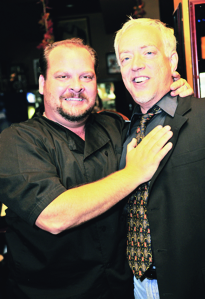 possible place to try and attract LGBT people, artists, young folks, and other alternative types. It took a decade to make this happen but eventually they came to this eclectic, middle-and-working-class town, and created what we now know as this cool place.
possible place to try and attract LGBT people, artists, young folks, and other alternative types. It took a decade to make this happen but eventually they came to this eclectic, middle-and-working-class town, and created what we now know as this cool place.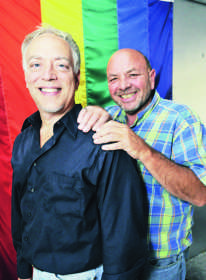 race. To this day, Ferndale has the least number of officers of color than any city around us. As the march toward high-end development and further gentrification continues, I hope the city does not price itself out of reach to young people, seniors, and ethnic and racial minorities. It would be a shame if we turned into another Royal Oak or Birmingham.
race. To this day, Ferndale has the least number of officers of color than any city around us. As the march toward high-end development and further gentrification continues, I hope the city does not price itself out of reach to young people, seniors, and ethnic and racial minorities. It would be a shame if we turned into another Royal Oak or Birmingham.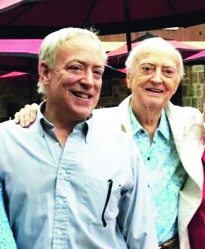 therapy, and even dancing in the down-town. Gay people and African Americans were barely tolerated. The downtown was barren, and the neighborhoods bordered on shabby. Today it is full of energy, young people, and at least purports to be welcoming to all.
therapy, and even dancing in the down-town. Gay people and African Americans were barely tolerated. The downtown was barren, and the neighborhoods bordered on shabby. Today it is full of energy, young people, and at least purports to be welcoming to all.
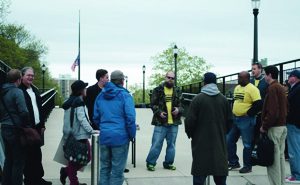 the last general election, a voter may have marked their ballot 1) Clinton, 2) Stein, 3) Johnson. If any candidate gets a simple majority, they win. If nobody gets at least 50 per cent, then the candidate with the fewest votes is eliminated, and if that candidate is your first choice then the second choice on your ballot is counted instead. The process continues until finally one candidate emerges with majority support of the electorate.
the last general election, a voter may have marked their ballot 1) Clinton, 2) Stein, 3) Johnson. If any candidate gets a simple majority, they win. If nobody gets at least 50 per cent, then the candidate with the fewest votes is eliminated, and if that candidate is your first choice then the second choice on your ballot is counted instead. The process continues until finally one candidate emerges with majority support of the electorate.
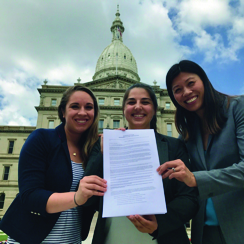
 dedicated to democracy and America. Names like “Fair Districts Mass” and “Protect Your Vote” and “The Center for a Better New Jersey.” But a deep-dive investigation by ProPublica (an independent, nonprofit newsroom that produces investigative journalism with moral force.) found that while these groups purport to help represent voters in their communities, their main interest is gaining a political advantage in the fight over redistricting. Powerful players are turning to increasingly sophisticated tools and techniques to “game” the redistricting process, while voters are almost all blind to their shenanigans, and ultimately losing.
dedicated to democracy and America. Names like “Fair Districts Mass” and “Protect Your Vote” and “The Center for a Better New Jersey.” But a deep-dive investigation by ProPublica (an independent, nonprofit newsroom that produces investigative journalism with moral force.) found that while these groups purport to help represent voters in their communities, their main interest is gaining a political advantage in the fight over redistricting. Powerful players are turning to increasingly sophisticated tools and techniques to “game” the redistricting process, while voters are almost all blind to their shenanigans, and ultimately losing.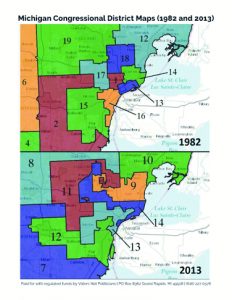 two parties manipulate our election maps in 2020, when the next census is conduct-ed. Both parties are preparing to continue the tradition of partisan gerrymandering and have very distinct and aggressive strategies in place to secure voting districts: the Republicans are preparing a project called REDMAP 2020 and the Democrats are preparing their own project named ADVANTAGE 2020.
two parties manipulate our election maps in 2020, when the next census is conduct-ed. Both parties are preparing to continue the tradition of partisan gerrymandering and have very distinct and aggressive strategies in place to secure voting districts: the Republicans are preparing a project called REDMAP 2020 and the Democrats are preparing their own project named ADVANTAGE 2020.
 detrimental to the overall health of the environment (minimizing, if not eliminating the use of poisons). This group is intended for those that are ready to take action and learn, not to blame, complain and wait for others to do something. We are not a pest control service – we’re a grassroots organization of citizens and neighbors who perform outreach to educate on what drives the rat population, help eliminate rat habitat, and empower homeowners to remove rats effectively and manage their property to eliminate the rat population.
detrimental to the overall health of the environment (minimizing, if not eliminating the use of poisons). This group is intended for those that are ready to take action and learn, not to blame, complain and wait for others to do something. We are not a pest control service – we’re a grassroots organization of citizens and neighbors who perform outreach to educate on what drives the rat population, help eliminate rat habitat, and empower homeowners to remove rats effectively and manage their property to eliminate the rat population.
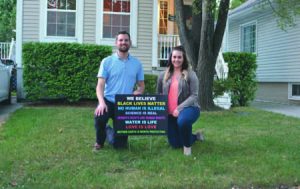 Sarah Lynn Fox liked the signs she was seeing, too. She and her husband, Brian Stawowy, noticed them as they walked their dogs around the neighborhood. Sarah said, “It made me feel so great to see all the signs…proud to live in Ferndale.”
Sarah Lynn Fox liked the signs she was seeing, too. She and her husband, Brian Stawowy, noticed them as they walked their dogs around the neighborhood. Sarah said, “It made me feel so great to see all the signs…proud to live in Ferndale.” town.” They both mention “admiring their neighbors’ houses, the front yard gardens”. Brian said the best part was “us working together and meeting our neighbors face-to-face.” They loved the chance to get to know more about their adopted home town. People were friendly, inviting them in and sharing their Ferndale knowledge with them.
town.” They both mention “admiring their neighbors’ houses, the front yard gardens”. Brian said the best part was “us working together and meeting our neighbors face-to-face.” They loved the chance to get to know more about their adopted home town. People were friendly, inviting them in and sharing their Ferndale knowledge with them. Along with the signs, Fox and Stawowy are circulating petitions to support “Voters, Not Politicians,” a ballot proposal to end gerrymandering in Michigan. It’s an important, non-partisan issue. “You have to start some-where,” says Fox. “We can no longer make excuses to not get involved.”
Along with the signs, Fox and Stawowy are circulating petitions to support “Voters, Not Politicians,” a ballot proposal to end gerrymandering in Michigan. It’s an important, non-partisan issue. “You have to start some-where,” says Fox. “We can no longer make excuses to not get involved.”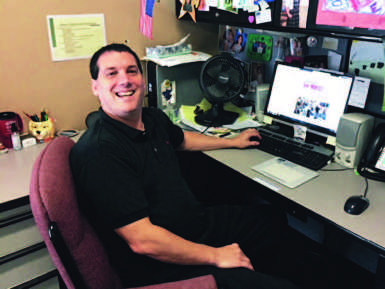
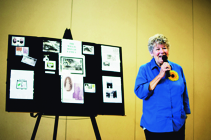
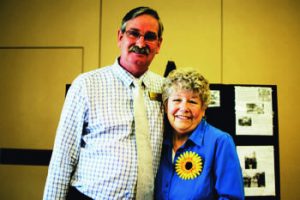 political group.” The visits are merely to provide information to attendees. Politicians and candidates do well to court senior voters. According to
political group.” The visits are merely to provide information to attendees. Politicians and candidates do well to court senior voters. According to 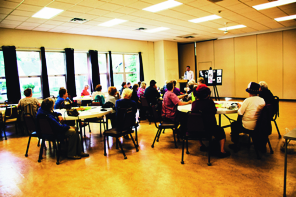 and active communities.” Davis, who retired from running her own business as a real estate appraiser, considers Ferndale as a “senior-friendly” city. “Ferndale is a very walk-able community,” she said. “Also, we love the ‘businesses on Nine’, especially Western Market.” Davis says. She adds that Ferndale’s Metro Detroit location means there are plenty of opportunities for visiting cultural venues and volunteering.
and active communities.” Davis, who retired from running her own business as a real estate appraiser, considers Ferndale as a “senior-friendly” city. “Ferndale is a very walk-able community,” she said. “Also, we love the ‘businesses on Nine’, especially Western Market.” Davis says. She adds that Ferndale’s Metro Detroit location means there are plenty of opportunities for visiting cultural venues and volunteering.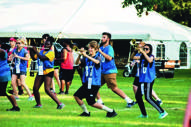

 least two of the 20 or more contests that MCBA holds each year. A band must attain scores at MCBA contests placing it among the 12 highest scoring bands in its flight competition. Judging categories are weighted between musical, visual and overall general effect.
least two of the 20 or more contests that MCBA holds each year. A band must attain scores at MCBA contests placing it among the 12 highest scoring bands in its flight competition. Judging categories are weighted between musical, visual and overall general effect. more about the whole rather than just them-selves.” Langley went on to say, “This activity is the determining factor of success in many kids’ lives.”
more about the whole rather than just them-selves.” Langley went on to say, “This activity is the determining factor of success in many kids’ lives.”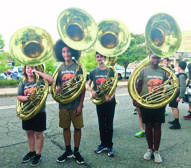 large subcommittee of FAB run by a handful of dedicated parents,” Langley said. “Without them, we would not be able to function at the level we do. They are wizards of finance.
large subcommittee of FAB run by a handful of dedicated parents,” Langley said. “Without them, we would not be able to function at the level we do. They are wizards of finance.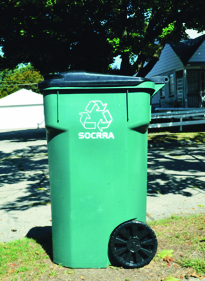
 only metal that can go in the carts are cans and empty aerosol cans,” Farris says. “These, along with Styrofoam and plastic bags can be brought to the SOCRRA drop off center for recycling.”
only metal that can go in the carts are cans and empty aerosol cans,” Farris says. “These, along with Styrofoam and plastic bags can be brought to the SOCRRA drop off center for recycling.”